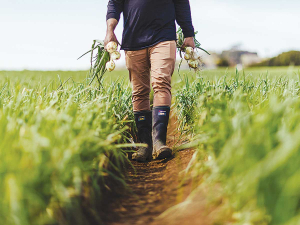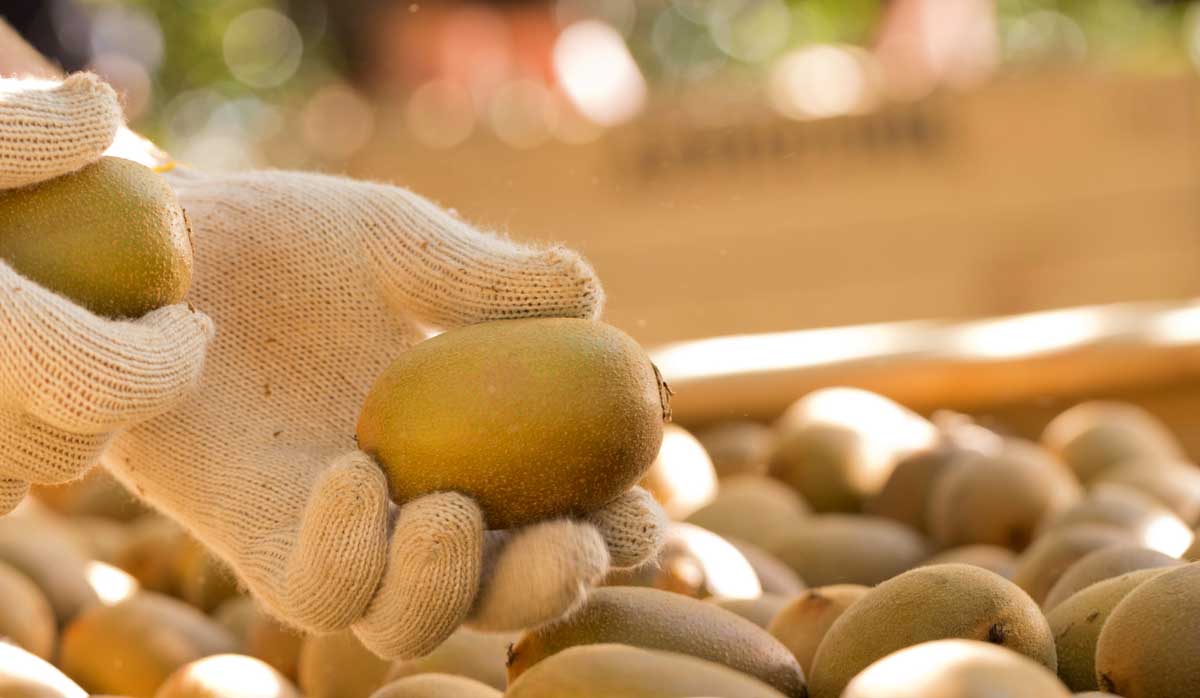Damien O’Connor: NZ united on global trade
When it comes to international trade, politicians from all sides of the aisle are united, says Labour's trade spokesman Damien O'Connor.
 Horticulture sector revenue is expected to grow exponentially over the next four years - from the present $6.9 billion to $8.6 billion by 2027.
Horticulture sector revenue is expected to grow exponentially over the next four years - from the present $6.9 billion to $8.6 billion by 2027.
Despite the ravages of cyclones, floods and warm winters, revenue from the horticulture sector is expected to grow rapidly over the next four years - from the present $6.9 billion to $8.6 billion by 2027.
This is the prediction contained in MPI's latest Situation and Outlook Report on Primary Industries (SOPI) released at Fieldays.
The report predicts that revenue for 2023 will rise by 2% on last year - despite the sector facing adverse weather conditions during the past 12 months and mrore.
The report acknowledges that many of the North Island horticultural areas were impacted by the weather in the 2022/23 season, resulting in reduced crop volumes and revenue for growers. This was in contrast to South Island regions, which experienced favourable growing conditions that delivered good crop of cherries and wine grapes.
Following a challenging season in 2021/22, the report says about half the apple and pear growers in Hawke's Bay and Gisborne - where 70% of NZ apples and pears are grown - faced further unprecedented challenges in 2022/23 due to Cyclone Gabrielle.
As a result, the national crop is expected to be down by 15% compared with the 2022 crop, MPI says apple and pear exports are expected to slowly increase ovr the coming forecast years, but it will take many years for the regions hit by the cyclone to fully recover.
It says around 50% of the apple growing areas in Hawke's Bay and Gisborne were directly affected by the floodwaters, silt, debris, wind and surface flooding.
It points to the fact that newly planted orchards were among those damaged. It also confirms that some orchards will require major work to get back into production, including clearing silt, replacing damaged infrastructure and completely replanting some orchards.
There is also a likelihood that some orchards may never be replanted because they are so badly damaged.
The SOPI report makes the observation that the long-term survivability of all flood affected orchards is still unknown. It says the cost of reinstating apple and pear orchards is significant and says it could be up to $250,000 per hectare.
Other Exports
The volume of kiwifruit exports are down as already signaled earlier by Zespri.
In 2022, 177 million trays were exported; in 2023 it will be 163 million and down to 135 million in 202 - before picking up to 195 million trays in 2027.
On the plus side for kiwifruit, MPI is reporting that the quality issues that dogged the kiwifruit industry last year may be over and forecasts that orchard returns will rise despite the lower volume of fruit available for export - a fact already noted by Zespri.
 |
|---|
|
In 2022, 177 million trays of kiwifruit were exported. In 2023, it will be 163 million. |
The SOPI report notes that it's been another challenging season for avocados, with export revenue reaching $77 million to the end of March - down 3% on the previous 2021/22 season. It signals ongoing problems with the Australian market, which has traditionally taken upwards of 75% of our exports and the fall-off in exports to Asia.
The reprt also talks about the uncertainties and cost of exporting avocados and says shipping schedules remain "fragile".
Positive points in the report are cherry exports, which were up 400 tonnes to 3,600 tonnes on last year and fresh and processed vegetable exports that show a positive growth line from now through until 2027.
Horticulture New Zealand (HortNZ) says a new report projects strong export growth for New Zealand's horticulture sector highlights the industry's increasing contribution to the national economy.
Fonterra shareholders say they will be keeping an eye on their co-operative's performance after the sale of its consumer businesses.
T&G Global says its 2025 New Zealand apple season has delivered higher returns for growers, reflecting strong global consumer demand and pricing across its Envy and Jazz apple brands.
New Zealand's primary sector is set to reach a record $62 billion in food and fibre exports next year.
A new levying body, currently with the working title of NZWool, has been proposed to secure the future of New Zealand's strong wool sector.
The most talked about, economically transformational pieces of legislation in a generation have finally begun their journey into the statute books.

OPINION: Federated Farmers has launched a new campaign, swapping ‘The Twelve Days of Christmas’ for ‘The Twelve Pests of Christmas’ to…
OPINION: It used to be that the National Fieldays attracted brickbats for being officious clipboard carriers, while the regional, farmer-run field…